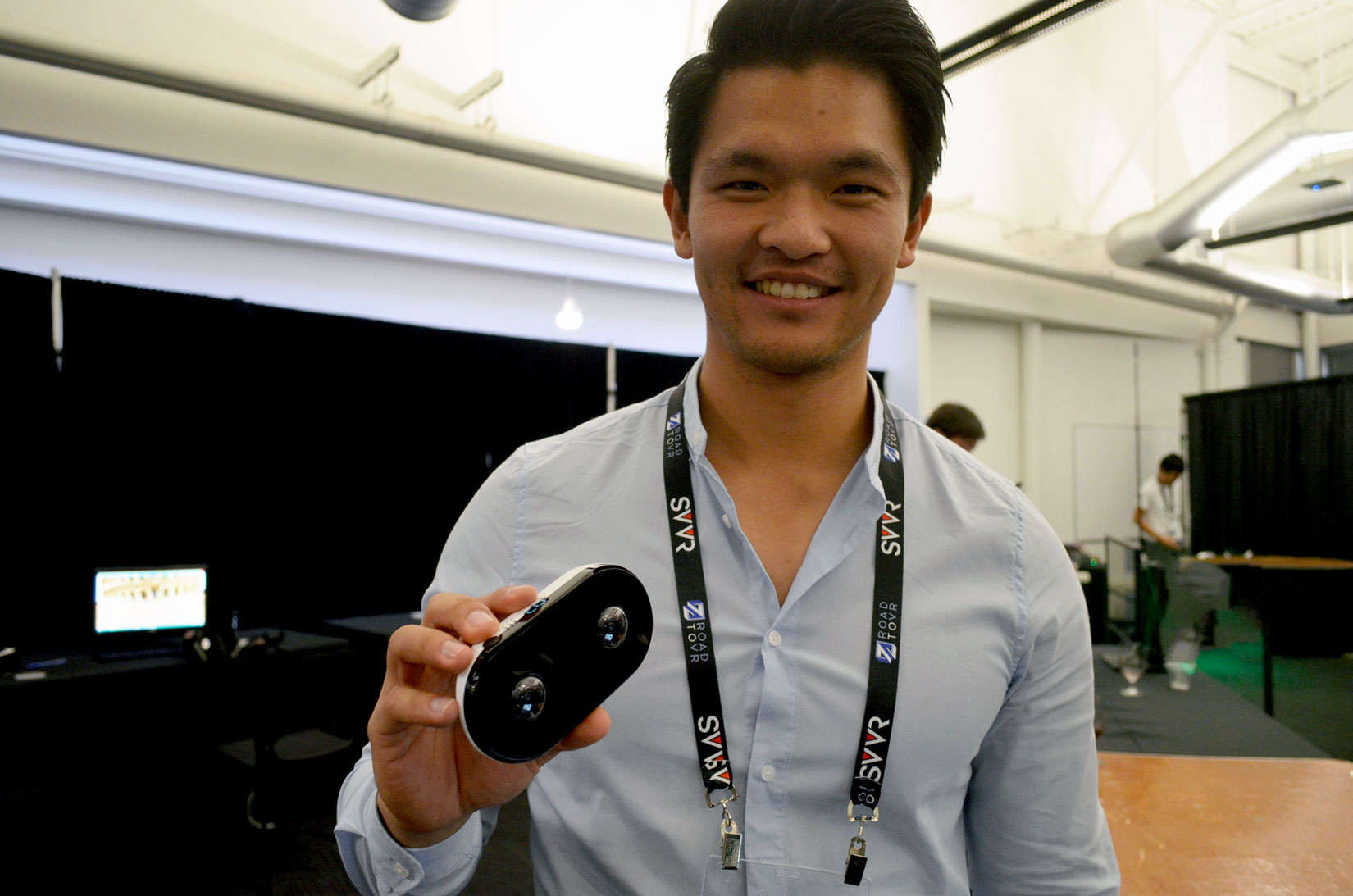Han Jin was looking through the eyes of the robot and could see the future. But the story doesn’t end well for the robot.
Jin’s view, with his colleagues’ support, put robot building on hold. The team changed direction, using the robot’s seeing mechanism to develop a Virtual Reality camera that could be put in the hands of regular folks.
It may seem like a daunting task for the team of LucidCam, which already has exceeded its crowdfunding goal on Indiegogo. VR is finally showing up on the horizon with products like the Oculus Rift headset for gaming, Google Cardboard, YouTube supporting 360-degree video projects and the New York Times giving some of its photojournalists VR cameras to make more immersive story experiences.
Still, curious investors, Jin said, are taking a wait-and-see approach, believing consumer interest won’t emerge until two to five years down the road.
But what if LucidCam is successful in bringing to market a high-def camera that creates stereoscopic video with point-and-shoot simplicity for under $500?
“I don’t think mass adoption is a window you have to hit,” Jin told Cult of Mac from Taiwan, where he is busily lining up manufacturing for the LucidCam. “I think we can accelerate interest if a camera like this would exist.”

Photo: LucidCam
LucidCam does not operate in 360, like a cinematic VR camera, which can run in excess of $60,000. Fitting in the palm of the hand, it has two cameras with 180-degree wide-angle lenses that take 1080P 3D video and photos. It has two microphones for stereo audio and one button – just aim and roll.
No stitching together of several files during several hours of post-production. Footage from LucidCam can be easily edited and shared, played back on a smartphone or viewed with any VR or cardboard headset. The LucidCam team has also produced brackets so that three cameras can be mounted together to create a full 360 experience.
Right now, backers to the Indiegogo campaign can get a LucidCam for $349.
Other companies are trying to grab a piece of the emerging VR consumer market. Earlier this year, Spherical 2, a 4K 360-degree video camera raised nearly half a million dollars on Kickstarter. It is available for pre-order for around $2,000.
Cult of Mac recently featured a startup company trying to produce a clip-on lens for the iPhone to create VR content. Google, this week, unrolled an app called Cardboard Camera that lets you record 3D VR content with the smartphone. The LucidCam team experimented with bringing VR to a smartphone but did not like working with small camera sensors or fisheye lens attachments that cut off light and resolution, especially around the edges of the frame.
There has been speculation in the tech press that GoPro, who created and now dominates the consumer market for action cameras, has a VR camera in the works.
“The VR space is so early right now, we don’t see it as a winner-takes-all scenario,” Jin said.
Jin’s background in engineering and manufacturing, which made his skill set attractive to LucidCam’s other co-founder, Chief Technology Officer Adam Rowell. Rowell was building a robot at the time when he asked Jin a couple of years ago to test the lenses that would serve as the eyes on the robot.
So when he donned an Oculus headset, “I looked through the eyes of the robot,” he said. “I could look around by turning my head and it put me in a different place. I thought why don’t we create a personal experience like that?”
Asking consumers to buy-in, especially when conventional cameras are being left in the closet and replaced by smartphone cameras, is a gamble. Will people want to take the time to edit footage or will they grow tired of moving around to watch content in a headset?
Jin remembers the first video made with the LucidCam prototype. It was of a baby playing on the floor. Curious about the person with the camera, the baby crawled over and reached out to the camera.
“When we watched the video, it felt like the baby was touching us,” he said.
Explaining it in 2D media, like on an Indiegogo page or in this story, doesn’t convey VR’s potential, Jin said. Seeing is believing.
https://youtu.be/Hqsog3Xv0f8


